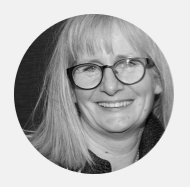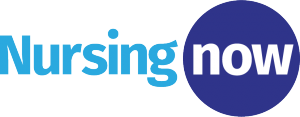 This blog was written by Michele Rumsey Director – World Health Organization Collaborating Centre (WHO CC), University of Technology Sydney (UTS), and uploaded on 24th September 2019.
This blog was written by Michele Rumsey Director – World Health Organization Collaborating Centre (WHO CC), University of Technology Sydney (UTS), and uploaded on 24th September 2019.
Yesterday, the UN passed the first-ever political declaration on Universal Health Coverage: ‘UHC: Moving Together to Provide a Healthier world’. This crucial global declaration was approved by 193 countries at the 74th Session of the UN General Assembly’s one-day high-level meeting on Universal Health Coverage (UHC) in New York.
Since 2004, the alliance between WHO Collaborating Centre (WHO CC) at the University of Technology Sydney and Chief Nurses from the South and North Pacific has made significant progress towards ‘Moving together to build a healthier world’, using the UN Six Asks Action Agenda on UHC. Our WHO CC has been focused on the Six Asks to conduct a report on the ‘Vital role of Nursing’ in our region which is due to be launched by WHO Western Pacific Region 2020 in line with the UHC 2030.
Our report will focus on…
Ask 1) Ensuring Political Leadership beyond Health,
Ask 2) Leaving no one behind,
Ask 3) Regulation and Legislation,
Ask 4) Upholding Quality of care,
Ask 5) Investing more, Investing better,
Ask 6) Moving Together (1).
This 2019 document, ‘Moving together to build a healthier world: Key Asks from the UHC Movement (1), UN High Level Meeting on UHC’, makes a strong case to political leaders to legislate, invest and collaborate and with all societies to make Universal Health Coverage a reality. It states that everyone from everywhere should have access to quality and affordable health services. One clear focus has been ASK 4 ‘Upholding quality of care’, and to, ‘Train a health workforce based on quality and competence, with a special focus on nurses, midwives and community health workers. Education must improve overall management capacity and skills and foster the appropriate use of technology. UHC requires supportive education policies, labour market regulations, effective environmental stewardship and monetary and non-monetary incentives for health workers.
Within the Pacific region, this is absolutely essential when 78% of the health workforce are nurses and midwives (2) and yet we have a significant shortage of educators, lack of quality processes in educational institutes, nurses working in extremely remote and poorly resourced situations, who do not have the opportunity to continue professional development (3-8). This workforce is between 80-90% female. In addition, nurses are often the ‘first responders’ in natural disasters (9). While monitoring health outcomes, providing preventative health education and collecting vital data on their local populations, nurses also administer palliative care with little access to medications, and of course have to juggle busy family lives while often acting as heads of their community (10,11).
Nurses know that investing in health is key to economic, social empowerment, protecting human rights and achieving UHC. While some progress has been made towards increasing life expectancy and maternal and child health, significant challenges remain in the areas of re-emerging diseases, NCDs, mental health and anti-microbial resistance. We strongly support the return of Item #23 in the UN UHC declaration which expresses concern for ‘global shortfalls of health workers, primarily in low and middle-income countries’ (12), and the importance of training, especially for, ‘nurses, midwives and community health workers … who can unleash significant socio-economic gains and contribute to the eradication of poverty in all its forms and dimensions, empowerment of all women and girls and reduction of inequality’.
The importance of having nursing and midwifery in the declaration was emphatically supported by the State of World Nursing Report (SOWN) meeting held this week at WHO CC UTS in Sydney which brought together Chief Nursing Officers from Fiji, Kiribati, Nauru, Niue, PNG, Samoa, Solomon Islands, Tokelau, Tonga, Tuvalu, Vanuatu, Palau, Federated States of Micronesia as well as Australia and New Zealand.
This intensive 3-day meeting provided an invaluable opportunity for these leaders to not only assemble and review their data for the SOWN report, but also discuss the key obstacles facing nurses and midwives across the region.As director of WHO CC UTS “I hope this meeting and the SOWN report will show where the gaps are and be an important decision-making tool in the future.”
The newly instated Chief Nurse of Tuvalu, Alaita Taulima, stated that, ‘in my new role as, Chief Nurse we’re recruiting from other countries to address the challenges that nurse and midwifery shortages in Tuvalu bring. The meeting was an opportunity to work hard and get the data which will help us solve issues like this in the future’. Samoan Chief Nurse, Fuatai Maiava said that, ‘The SOWN Report will play an important role in contributing to UHC in the North and South Pacific. We are all so isolated, so it was great being able to come together and hear about what was happening in other remote island nations who manage to do so much with so few resources.’ Helen Murdoch, Chief Nurse of Kiribati said she felt incredibly privileged to be part of a team working together to provide a baseline in (SOWN) which we can then work from in future.
We hope that this innovative initiative, which has enabled all these Pacific nations to come together, will set a precedent for more regions to host similar events for the next SOWN Report.
- United Nations. Moving Together to Build a Healthier World: Key Asks from UHC Movement. New York, 2019.
- Perspectives. P. Pacific Health Workforce Service Forecast: Report to Health Workforce New Zealand and the Ministry of Health. Wellington, NZ:: Pacific Perspectives., 2013.
- World Health Organization. Health workforce: Density of nursing and midwifery personnel (total number per 1000 population). 2016 (accessed 14 June 2016 2016).
- Dussault G, Franceschini M. Not enough there, too many here: understanding geographical imbalances in the distribution of the health workforce. Human Resources for Health 2006; 4(1): 12.
- Dumont J-C, Zurn P, Church J, LeThi C. International mobility of health professionals and health workforce management in Canada: myths and realities: OECD; 2008.
- Homer C. Improving nursing and midwifery workforce for primary health care in Samoa. Pacific Society for Reproductive Health; 2013.
- World Health Organization Health Workforce Development in the Pacific: Scoping paper developed for the Pacific Health Minister Meeting 2017 Fiji,: WHO, 2017.
- Buchan J. Right time, right place? New evidence on effective health workforce distribution and retention. BMC Health Services Research 2014; 14(2): O19.
- Rumsey M, Fletcher S, Thiessen J, et al. A qualitative examination of the health workforce needs during climate change disaster response in Pacific Island Countries. Human Resources for Health 2014; 12(1): 2-20.
- Negin J. Scale, value and innovation: a new model of health workforce training 2015.
- Rumsey M, Catling C, Thiessen J, Neill A. Building nursing and midwifery leadership capacity in the Pacific. International Nursing Review 2017; 64: 50-8.
- Kaplan AD, Dominis S, Palen JG, Quain EE. Human resource governance: what does governance mean for the health workforce in low-and middle-income countries? Human Resources for Health 2013; 11(1): 6.
World Health Organization – Western Pacific Region. Health Workforce Regulation in the Western Pacific WHO Manila: World Health Organization – Western Pacific Region, 2016.
World Health Organization. Transforming and scaling-up health professionals’education and training – World Health Organization guidelines 2013. Geneva, Switzerland: World Health Organization, 2013.
High-Level Commission on Health Employment and Economic Growth. (accessed 15 September 2016).
16. World Health Organization. Increasing access to health workers in remote and rural areas through improved retention: Global policy recommendations. Geneva: World Health Organization, 2010.


